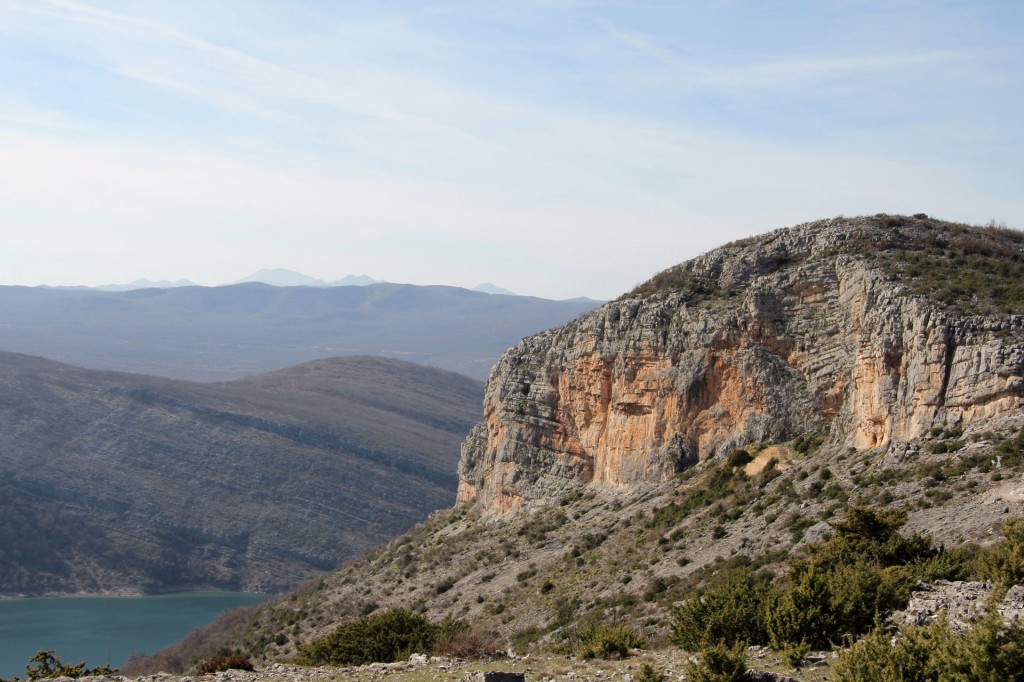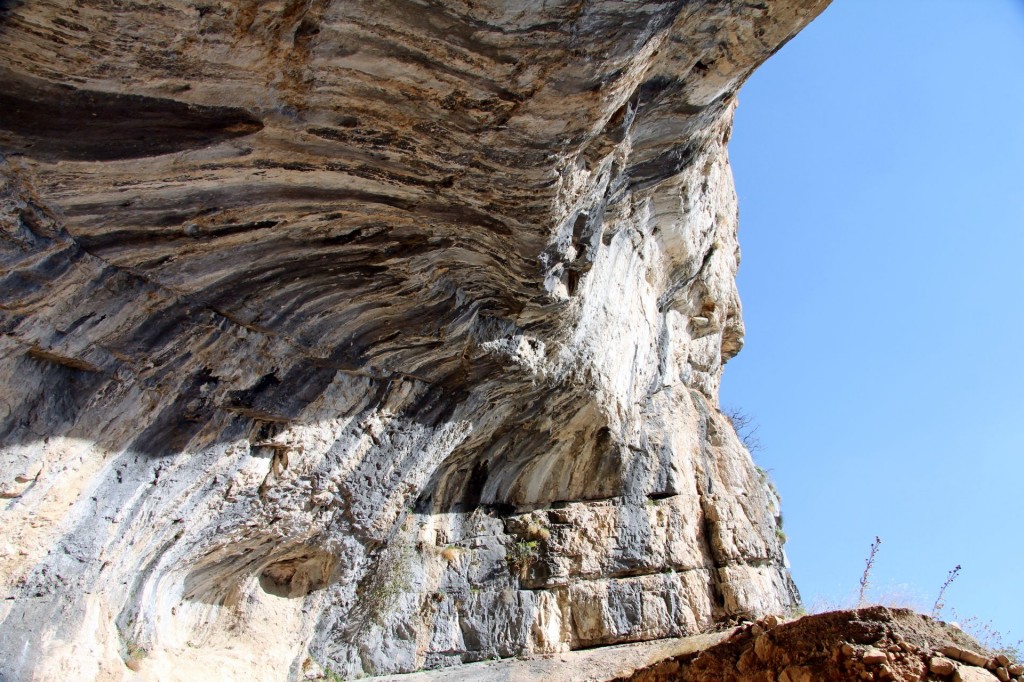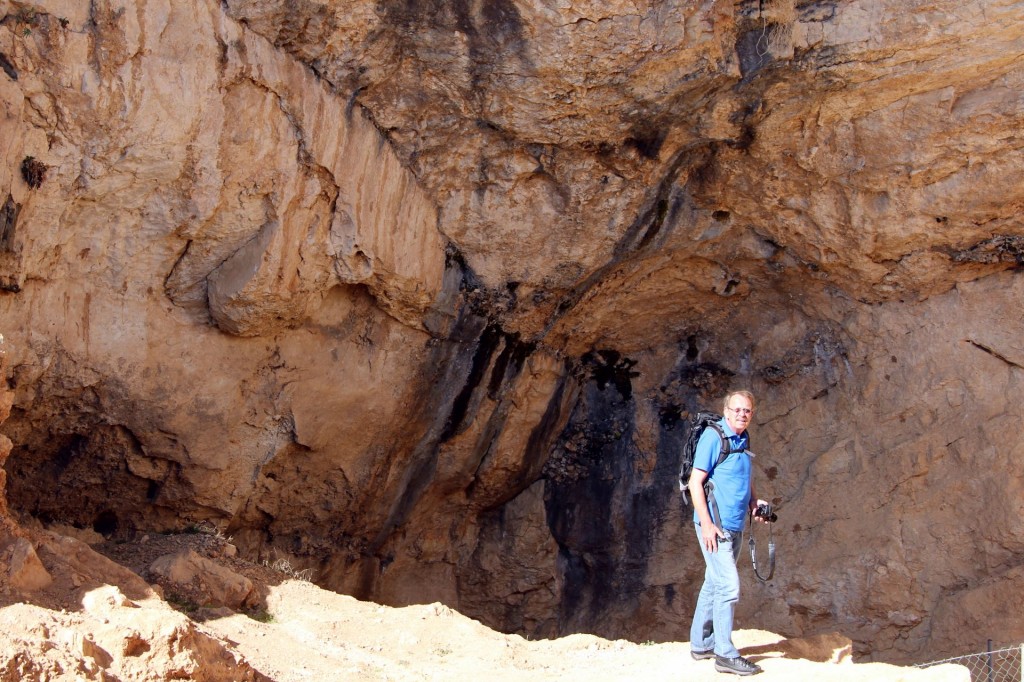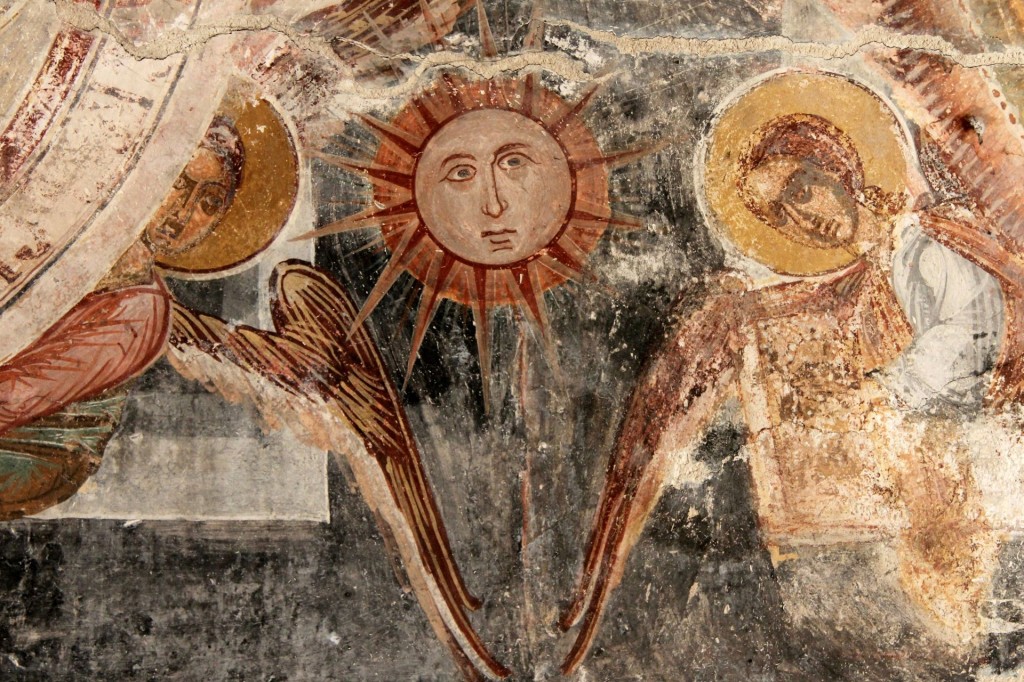 A rather unknown tourist attraction in Montenegro is Crvena Stijena, an archeological site from the Paleolithic Age that is situated near the village of Petrovići, 30 km from Nikšić. The Red Rock Cave was a good reason for us to make a day trip to the karst region between Nikšić and the border of Bosnia and Herzegovina. We combined the trip with a visit of the Kosijerevo Monastery. An insider’s tip!
A rather unknown tourist attraction in Montenegro is Crvena Stijena, an archeological site from the Paleolithic Age that is situated near the village of Petrovići, 30 km from Nikšić. The Red Rock Cave was a good reason for us to make a day trip to the karst region between Nikšić and the border of Bosnia and Herzegovina. We combined the trip with a visit of the Kosijerevo Monastery. An insider’s tip!
From Nikšić we took the road west from the city in the direction of Trebinje until Vilusi, where we turned right in the direction of Bileća (Bosnia and Herzegovina) and soon we passed the village of Broćanac Viluški. On the right side of the road we stopped for a moment near the small white church. The huge medieval tombstones on the graveyard belong to the most beautiful „stećci“ in Montenegro.
 After a few kilometers we made a left turn in the direction of Petrovići, following the signs to the Kosijerevo Monastery. Turning right in front of the monastery, we followed the narrow road until the end, just past a large walled estate on the right. There we parked our car on a small plateau and admired the beautiful view of Bilećko Jezero and the huge reddish rock above it.
After a few kilometers we made a left turn in the direction of Petrovići, following the signs to the Kosijerevo Monastery. Turning right in front of the monastery, we followed the narrow road until the end, just past a large walled estate on the right. There we parked our car on a small plateau and admired the beautiful view of Bilećko Jezero and the huge reddish rock above it.
The landscape was magnificent. On one side the barren karst rocks, on the other side the blue lake with its green surroundings. Everywhere around us we saw the bright yellow colors of flowering spurge and dogwood. The view of the lake was breathtaking!
A signpost showed us the path to the cliff and it took us only ten minutes to reach the cave with its 24 meters wide opening.
 The area around the cave was fenced off, but the gate was not locked, so we continued walking along the path and reached a steep ladder leading down. Everything was abandoned. Obviously, archeological research has been suspended. Honestly speaking, we did not have the courage to go down without a guide!
The area around the cave was fenced off, but the gate was not locked, so we continued walking along the path and reached a steep ladder leading down. Everything was abandoned. Obviously, archeological research has been suspended. Honestly speaking, we did not have the courage to go down without a guide!
The cave itself is thrilling. Situated on the left bank of the Trebišnjica river, around 700 meters above sea level, it was discovered in 1954. Archeologists have already revealed thirty-one cultural layers. More than 5,000 artefacts were found in the cave, of which the oldest stone artefacts are 180,000 years old. Crvena Stijena was inhabited by 15 to 20 people, who had a semi-nomadic lifestyle and respected their neighbors who lived in similar groups. Although there were no information boards near the cave, it was not hard to imagine those prehistoric people hunting and fishing in this environment.
 After having enjoyed the silence and peacefulness of this beautiful place, we returned to the Kosijerevo Monastery. The new monastery that was built instead of another one, which was flooded by the Bileća Lake, possesses a valuable relic, the foot of St. Lucas. In the courtyard we saw a newly built charnel house for the victims of World War II. But a real surprise was the old church on the right side of the monastery, which is decorated with beautiful and very original frescoes. The paintings do not only show Orthodox saints and traditional scenes from the Bible, but also depict hell and punishment. I hope that there is a possibility to preserve these frescoes, as they are already damaged by moisture!
After having enjoyed the silence and peacefulness of this beautiful place, we returned to the Kosijerevo Monastery. The new monastery that was built instead of another one, which was flooded by the Bileća Lake, possesses a valuable relic, the foot of St. Lucas. In the courtyard we saw a newly built charnel house for the victims of World War II. But a real surprise was the old church on the right side of the monastery, which is decorated with beautiful and very original frescoes. The paintings do not only show Orthodox saints and traditional scenes from the Bible, but also depict hell and punishment. I hope that there is a possibility to preserve these frescoes, as they are already damaged by moisture!
Returning to Podgorica, I concluded once more that Montenegro has numerous hidden treasures, which are still unknown to foreign tourists. The Red Rock Cave is one of them, not only for historical and cultural reasons, but also as a natural phenomenon.


Lijepo je putovati sa Tobom i uživati u Tvojim opisima i
zapažanjima. Šteta je samo da teksta nema i na črnogorskom, jer bi sigurno imao dosta čitalaca. Gizela
Mozda cu uskoro poceti da blogujem dvojezicno, ali jos uvijek nemam dosta vremena ….
[…] of human occupation nearby in Bulgaria dating to 1.5 million years ago. Montenegro itself has a cave (which we considered visiting) with stone artefacts that are 180,000 years old. Much more recently, […]